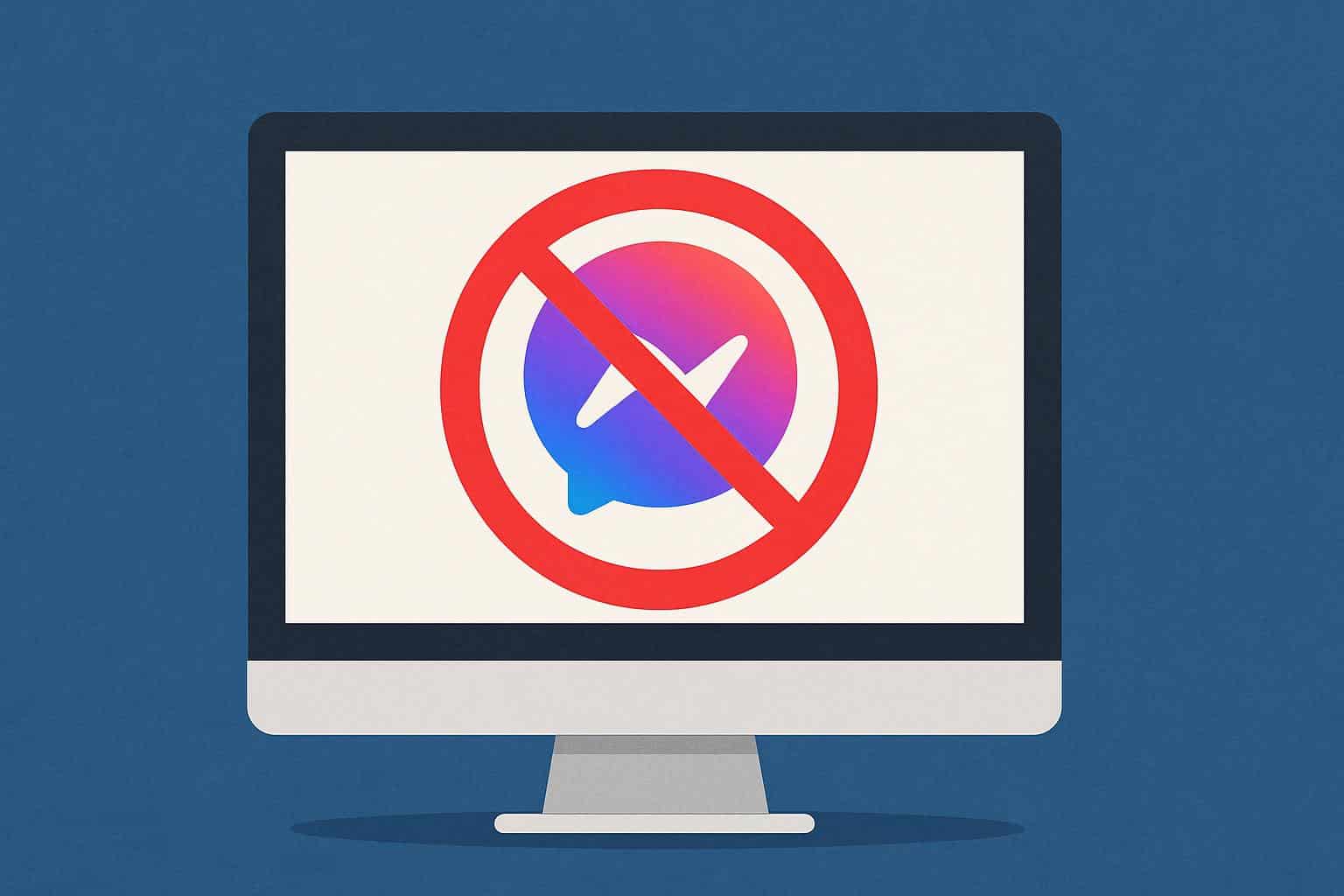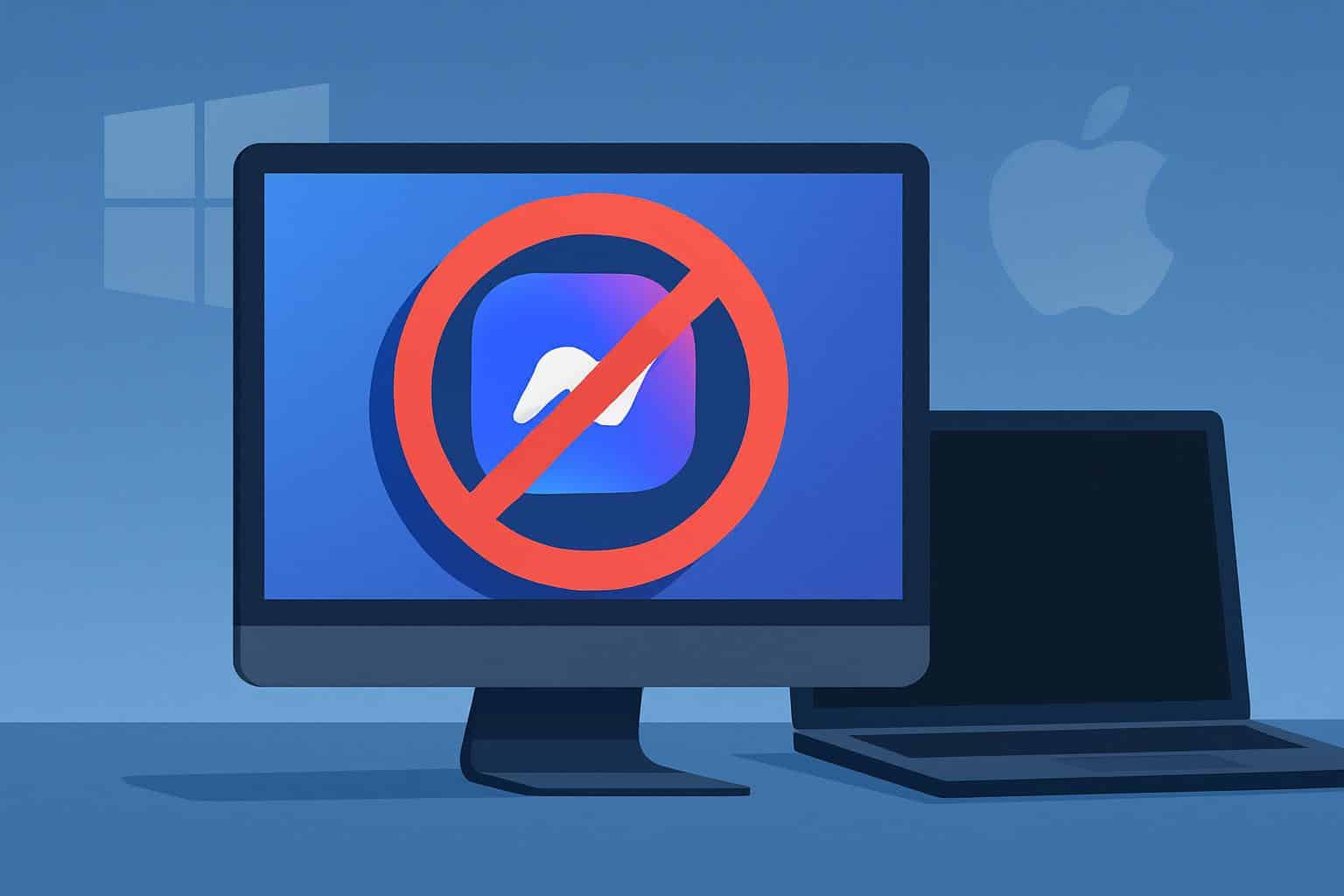Meta will phase out its native Messenger apps for Windows and macOS this year, encouraging desktop users to move to the web version of the service instead. The company has already started alerting users in-app; however, at this point, the apps are no longer available for download from the Microsoft Store or Apple’s App Store. After a brief winding-down period, the desktop apps will cease to function and sign-ins will be prevented.
The change leaves Messenger on the web, while Meta has been pouring a lot of effort there, including everything from end-to-end encryption and calling to notifications and performance. The shift will be invisible to many users, but for others who currently depend on a dock or taskbar presence, it will mean minor workflow adjustments.

Why Meta Is Sunsetting Its Messenger Desktop Apps
Meta did not provide an official reason, but several industry dynamics make the move unsurprising. Use has increasingly shifted to mobile and browser tabs, both moving toward supporting persistent notifications, background calling, and sharing media without the overhead of maintaining separate native codebases. Installable web apps and system notifications are now natively supported by modern browsers, reducing the disadvantage of not being native desktop applications.
Another probable factor is a focus on resources. Messenger has introduced end-to-end encryption by default and is combining features across Messenger, Instagram DMs, and WhatsApp. It’s too slow to achieve parity across three desktop stacks and the web. By focusing on the browser, Meta minimizes fragmentation even as it carries out the security and interoperability work that regulators and users will soon demand.
What Changes for Windows and Mac Messenger Users
For all intents and purposes, your conversations, media, and calls are still on Messenger.com. You can get desktop notifications, pin the site to your taskbar (or dock), and—by adding it as an app through your browser’s Install or Add to Dock feature—treat it as a standalone program in some ways. Keyboard shortcuts and multi-window arrangements might behave oddly, but messaging basics are intact.
What you lose are app-specific touches like a persistent menu bar icon, some OS-level integrations, and offline access when you close a browser. For the majority of users, those trade-offs are worth it to provide a single, always-up-to-date web interface managed by one company.
Secure Your Messages Before the Desktop Switch
Meta says conversations are linked to your account, not the device—but there are two key checks to make before the shutdown. First, make sure secure storage is enabled for your E2E chats to back up keys to your account. This can be found under Settings > Privacy & Safety > End-to-end encrypted chats; toggle between Message storage and Secure storage.
Next, if you want a local archive, use Facebook’s Download Your Information tool in Account Settings to download messages and media. This is particularly helpful for companies that need to manage records of customer conversations on Pages.

What the Move Says About Meta’s Strategy
Messenger is still one of the largest chat platforms in the world. Its active user counts, meanwhile, are slightly below those of WhatsApp and WeChat and roughly equivalent to those of Telegram, according to recent rankings by Statista. At that scale, prioritizing platform tightening is crucial: focusing engineering efforts on the web and mobile apps ought to speed up security upgrades and feature rollouts—say, encrypted backups, better video calling, and common communication across apps.
It’s also indicative of how Meta sets itself apart in the market.
WhatsApp also has a strong desktop app that is heavily used in places where the service is the default for work and personal communication. Messenger, which is tightly integrated with Facebook and frequently accessed in a browser to begin with, is the more natural fit for a web-first strategy.
How Rivals Are Approaching Desktop Messaging
Competitors take mixed approaches. Telegram has a full-featured desktop client with multi-device sync. Discord and Slack lean on native apps for always-on communities and enterprise workflows. WhatsApp has a native app as well as a solid web experience. Messenger’s pivot demonstrates that there is no one-size-fits-all model; it varies depending on where users are spending time and how aggressively the platform ships cross-platform features.
Tips for a Smooth Transition to Web Messenger
For something that feels almost native, open messenger.com in Chrome, Edge, or Safari and activate desktop notifications. On Chromium-based browsers, you can click the Install button to add a Messenger shortcut to your computer. Pin it to your dock or taskbar, and configure it to open on login if you’d like access every time you start your computer.
Those managing customer messages should rely on Meta Business Suite (web), which centralizes messages from Facebook and Instagram, as well as team features such as assignments and automated responses.
Messenger will cease to function on the desktop but will remain available on the web. Thanks to the fact that all of your messages are saved to your account and you already have a perfectly functional web app, most users should be able to keep chatting with little additional friction—just in a tab rather than from an app icon.

